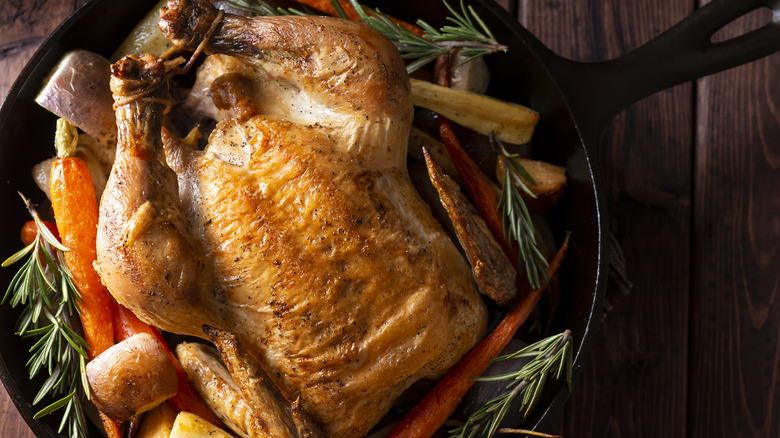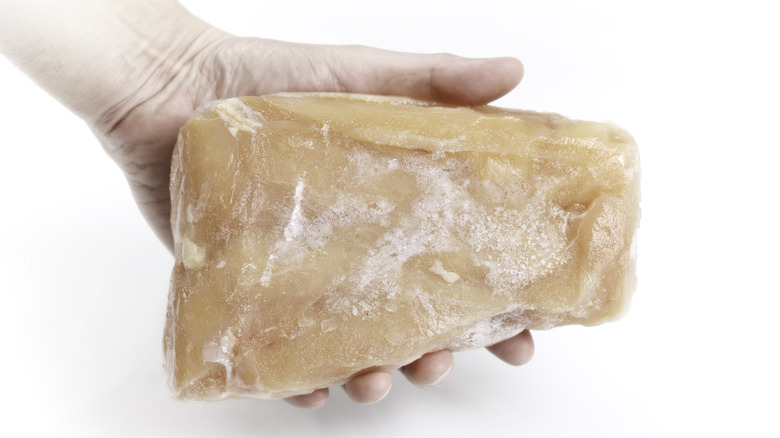Avoid Freezer Burn On Your Chicken With This Simple Method
Opening the freezer to get some chicken for dinner and finding it covered in freezer burn can ruin an evening. Unfortunately, frozen meat will eventually develop freezer burn, but there are a few workarounds to keep it off your chicken for longer.
Two key things cause freezer burn. The first is time. The maximum storage time the USDA recommends depends on the kind of raw chicken: three to four months for giblets and ground chicken, nine months for individual cuts, and one year for a whole chicken. The second cause is improper storage. To store chicken properly, ditch its original packaging. Grocery store packaging is filled with extra space that allows the air in the freezer to make constant contact with the meat, expediting freezer burn. Whether you have a whole chicken or cuts, wrap each piece tightly in plastic wrap. Then, place each wrapped part in a freezer bag. If you have a vacuum sealer, that's even better. You want as little air as possible to come into contact with the chicken.
You can also try quick-chilling your chicken by immersing the wrapped parts in a mixture of ice, salt, and water before placing it in the freezer. The salt lowers the mixture's temperature below the usual freezing point, allowing the meat to freeze faster. This greatly reduces freezer burn. However, the International Journal of Refrigeration notes that it will result in tougher chicken.
How can you tell if chicken has freezer burn?
If you know what to look for, freezer burn is pretty easy to spot. Discoloration will occur, with chicken taking on an unpleasant gray or beige tinge — far less appetizing than its optimal pink hue. However, the most noticeable sign of freezer burn is blotches across the meat's surface. These blotches will often be white or yellow, giving the appearance of a layer of fat. Even after the chicken has been thawed, these blotches will feel rough to the touch.
Shrink-wrapping your chicken may sound like a lot of effort, but it's worth it when you consider the alternative. Freezer burn is caused by ice crystals that develop when the water molecules present in the foodstuff freeze. Ice crystals form in the most suitable environment, which, in this case, is the side of the freezer that's coldest. The crystals will migrate to the surface of the chicken, causing the cell walls to rupture. Moisture escapes, resulting in dehydration. Freezer-burnt food is not unsafe to eat, but it's not exactly pleasant either. The meat will be unable to retain its juices during cooking, resulting in dry, flavorless chicken.
Taking good care of your freezer matters, too! Make sure to never overfill your freezer, and keep an eye on the temperature. It should always be set at 0 degrees Fahrenheit or less, so if you notice any temperature changes, it may be time to clean the freezer and scrape out excess ice.

